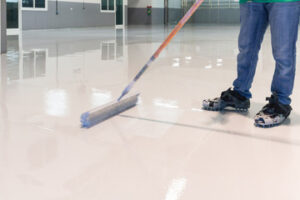Homeowners remodel their kitchens for a variety of reasons. Some common reasons include modernization, increasing functionality, and energy efficiency.
A well-planned kitchen remodel can turn your family meals into a joy instead of a chore. Before remodeling, clear out your cabinets and make sure to set up a temporary eating area for your kids. Contact Kitchen Remodeling Lexington KY for professional help.
Upgraded Appliances

One of the quickest and easiest ways to transform your kitchen is by upgrading appliances. Compared to a full kitchen remodel that requires permits, contractors and major construction, a simple appliance upgrade is a much simpler and less expensive undertaking.
Choosing the right appliances is crucial for your kitchen remodel. Consider your lifestyle and budget to determine which appliance features are the most important. For example, you might want a new stovetop that can keep up with high-demand cooking or a new microwave for heating leftovers on laid-back days. You may also opt for smart technology or temperature monitoring to help you save energy and money while you cook.
Upgrading your appliances can make your home feel fresh and trendy. You can choose from a variety of styles, colors and finishes to suit your tastes and complement the rest of your kitchen. You can even incorporate eco-friendly appliances to improve the value of your home and protect the environment.
Modern appliances are more energy-efficient than those available decades ago, saving you money each month on utility bills. You can further reduce your utility costs by choosing models with LED lights and low-flow faucets or installing tankless hot water systems that only heat water when needed.
Upgrading your appliances can signal that you’ve maintained your home well and help buyers envision themselves living in the space. This can help speed up the sale of your home and justify a higher listing price. However, it’s crucial to prioritize upgrades that will boost your home’s functionality and appeal to potential buyers over fads or passing trends. By working with a professional, you can ensure that your upgrades will add value and meet your future needs.
A Fresh New Look
A kitchen remodel is a great opportunity to introduce fresh, modern aesthetics. A few simple changes, like painting cabinets or installing new countertops, can drastically change the look of your kitchen without requiring extensive construction. Appliance upgrades to more modern and energy-efficient models will also give your kitchen a sleek and sophisticated feel. Touchless faucets and dishwashers are a trendy addition that both make cooking more enjoyable and contribute to a greener lifestyle.
Smart storage solutions are another great way to improve the function of your kitchen. Drawer organizers and pull-out shelving can maximize space in cabinets and help you keep your countertops free of clutter. Open shelving is a popular option that can add a sense of space to smaller kitchens, while still providing plenty of storage. In larger kitchens, a banquette breakfast nook or island can provide extra seating and workspace, while also offering ample storage underneath.
Lastly, remodeling your kitchen is the perfect time to add custom features that will make life at home more convenient and fun. A built-in coffee bar or pantry can make entertaining guests more pleasant, while an island with a sink and dishwasher can increase your food prep and dining options. Other popular options include creating a wine cellar or adding an outdoor kitchen.
A professionally-designed kitchen not only increases resale value, but it also helps you enjoy the heart of your home more. Whether you’re hosting family and friends or enjoying quiet dinners at home, a kitchen that works for your unique needs makes every day more satisfying. Start your kitchen remodel by making a list of the improvements you want to see and by seeking inspiration from online blogs, photos, and showrooms.
Increased Home Value
The kitchen is one of the most important aspects of any home, and it can play a significant role in your home’s overall value. A well-designed and updated kitchen can increase the value of your home significantly. If you plan on selling your home in the future, a kitchen remodel is a wise investment that will offer a high return on your money.
The best part about kitchen remodeling is that it can be done on a budget and in a time frame that suits your needs. With the right design and planning, a new kitchen can cost less than you might think. A professional can help you make the most of your space and budget to create a functional and stylish kitchen that will boost your home’s value.
When choosing which upgrades to implement in your kitchen, it is important to keep in mind what will appeal to potential buyers. Striking a balance between personalization and classic design elements can help you achieve a look that is appealing to a wide range of buyers. Additionally, upgrading to energy-efficient appliances and lighting can have additional benefits of saving on utility costs, which can be a big draw for eco-conscious buyers.
When you choose to remodel your kitchen, it is essential to hire a professional contractor. A professional can ensure that your project is completed according to industry standards and up to code. Additionally, they will have the expertise and tools to safely and efficiently perform tasks such as installing new plumbing or electric. This will avoid any expensive complications down the road that could derail your entire remodel. A professional can also help you obtain the necessary permits required for your renovation.
Increased Functionality
The kitchen is the most-used room in any home. It is a place where the entire family gathers for meals, snacks and drinks. Kitchen remodeling is a great way to update this popular space with features that make it functional for your lifestyle. Increased functionality in the kitchen can include things like adding a second eating area or creating more storage solutions to keep the room clean and organized. It may also include upgrading appliances to more energy efficient models that save time and money while reducing environmental impact.
Remodeling is a much more expansive project than renovation. A complete kitchen overhaul requires changing structural elements, layouts and aesthetics to create a completely new design. While renovating is often limited to surface improvements, such as updating appliances and fixtures or painting cabinets, kitchen remodeling allows for major structural changes, including moving walls and changing the location of plumbing and electrical outlets.
When designing a kitchen, the remodelers at Mr. Handyman will take the layout and style of your Temecula home into consideration. This will help them create a kitchen that is both functional and beautiful, with materials that complement the overall look of your home. For example, modern homes often benefit from sleek, contemporary materials, while more traditional styles are best suited for classic wood and stone. This will help the kitchen blend with the rest of the house, making it feel more unified and integrated. It is important to understand the difference between kitchen remodeling and renovation to determine which service is best for your home. Remodeling is a bigger project that can encompass a more drastic change, while renovation is less extensive and typically only involves surface improvements.
Energy Efficiency
The kitchen is a major energy consumer in the home, so it’s an ideal place to incorporate energy efficient upgrades. Replacing old appliances with new Energy Star models, updating lighting to LED, and adding tankless hot water systems are just a few ways homeowners can save money on utility bills while making their kitchens more sustainable.
Incorporating green features into your kitchen remodel is a great way to increase resale value and attract eco-conscious buyers. Using natural materials like reclaimed wood, bamboo countertops, and recycled glass tiles can add visual appeal to the space while showing your commitment to sustainability. Adding appliances with updraft ventilation systems that reduce toxic emissions and optimize air flow can also help make the kitchen more comfortable while saving energy.
While a complete kitchen overhaul is the most comprehensive way to update your kitchen, many homeowners prefer a more targeted approach. Replacing cabinets, updating the color palette, or resurfacing the countertops can give the room a fresh look without the expense and time commitment of a full remodel.
If you’re looking for a more permanent change, knocking down walls or creating a pass-through can give the space an entirely new feel while increasing functionality. These options can open up the floorplan, make the kitchen feel larger, and create a more open atmosphere.
While there are countless reasons to remodel your kitchen, it’s important to work with professionals so that the end result meets all of your functional and aesthetic needs. With the right design, materials, and amenities, your kitchen will be both functional and beautiful while helping you save money and live a healthier life. With so many benefits, it’s no wonder that kitchen remodeling is one of the most popular home improvement projects.

